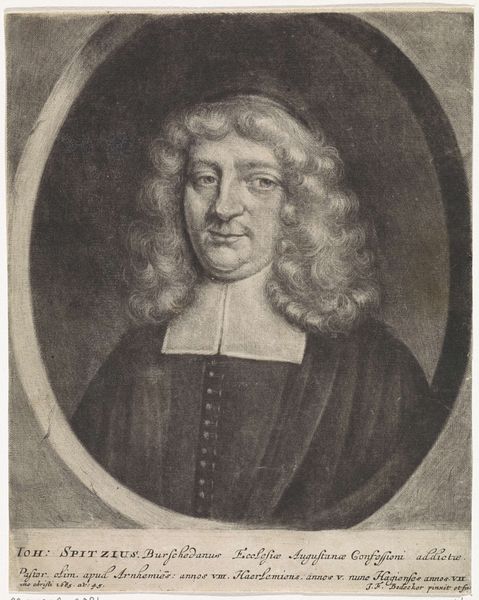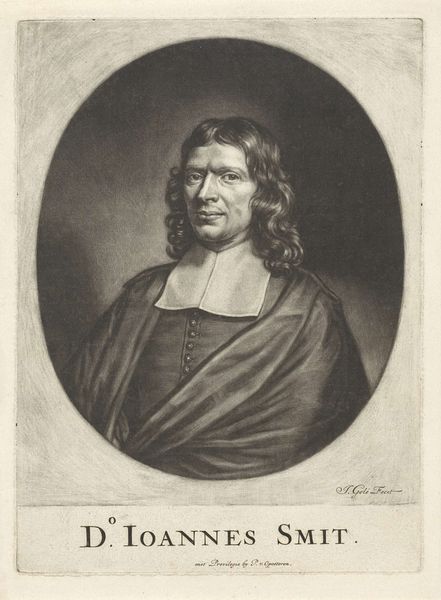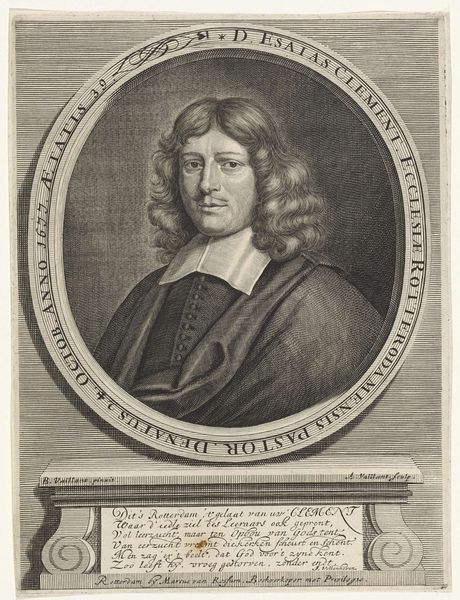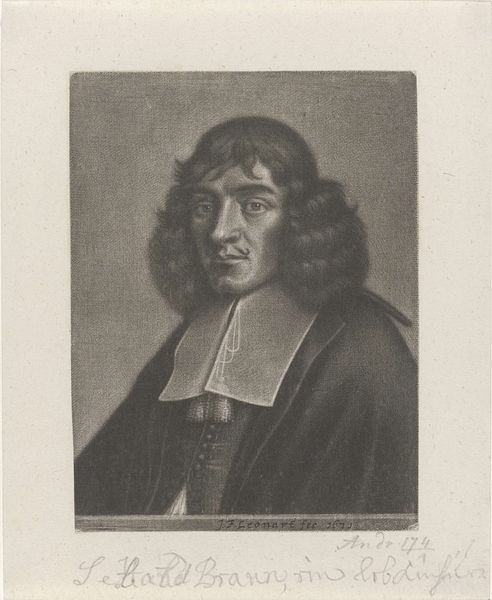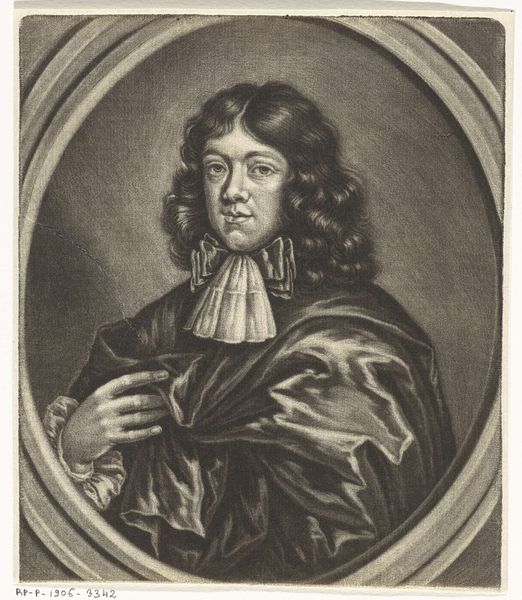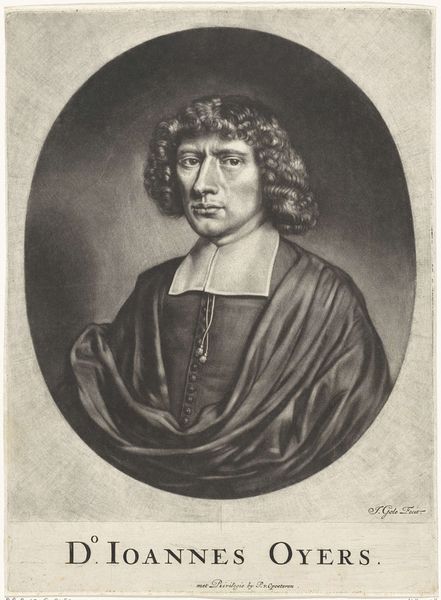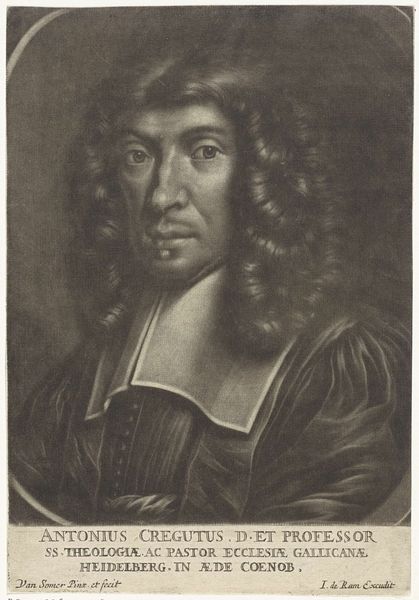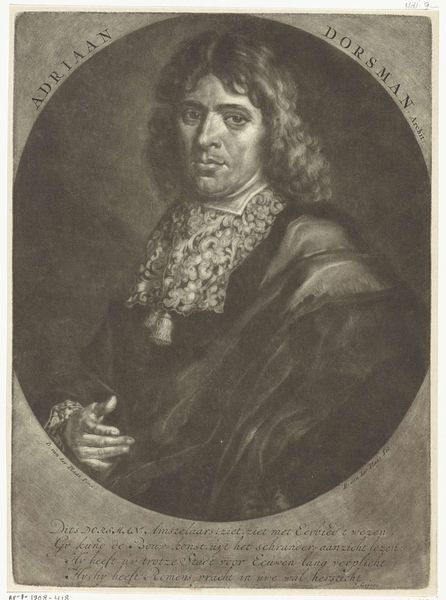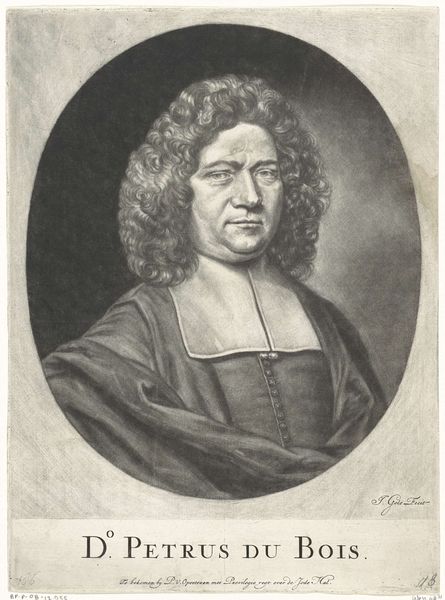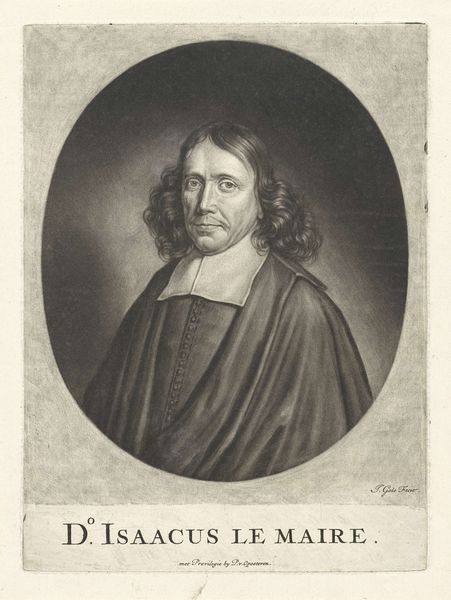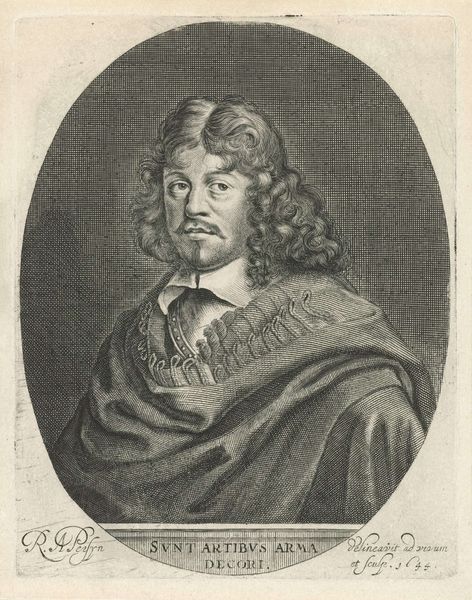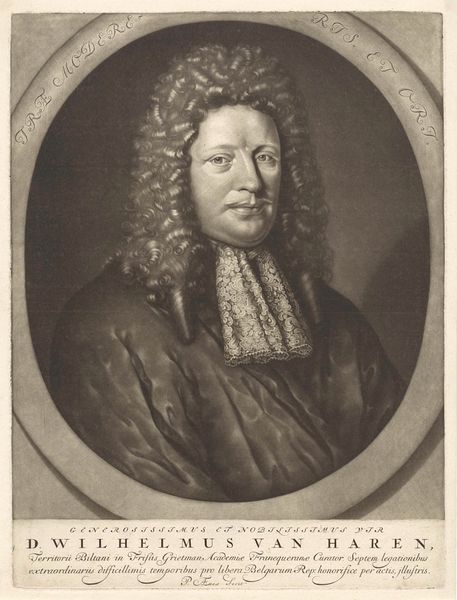
engraving
#
baroque
#
old engraving style
#
history-painting
#
engraving
Dimensions: height 200 mm, width 160 mm
Copyright: Rijks Museum: Open Domain
Editor: So, here we have a work titled *Portret van Georg Henri Petri,* made in 1686 by Johann Friedrich Bodecker. It's an engraving, which gives it a rather formal, almost austere quality. He seems rather stoic, wouldn't you say? What stands out to you? Curator: Oh, but look closer, beyond the stern gaze and Baroque formality. For me, this isn’t just a portrait, but a whisper from the past. Bodecker has managed to capture not just the likeness, but perhaps a sliver of Petri’s very essence. The light seems to cling to his face, highlighting a quiet strength. Do you feel that too, or am I just waxing poetic about old engravings again? Editor: No, I see it too. It’s almost like he’s looking *through* us. What about the inscription? It seems to indicate that Petri was a pastor? Curator: Exactly! The inscription, in that florid Baroque script, speaks of Petri’s dedication to his faith and service in Batavia – modern day Jakarta! The past connected, with whispers that ripple through time. Do you think Bodecker knew him personally? Or did he draw from second-hand accounts and perhaps, dare I say it, a touch of artistic license? Editor: I hadn't thought about that, the degree to which this is an interpretation rather than a purely documentary artifact. Maybe it's like looking at an old photograph and wondering about the unrecorded moments just before or after the click. Curator: Beautifully put. Each line, each shadow, is a clue, inviting us to reconstruct a life, a world. And sometimes, the most fascinating stories lie not in what's explicitly stated, but in what's left unsaid, don’t you agree? Editor: Definitely. I'll certainly look at portraits differently from now on, and remember to ask who these people were, and who *made* them who they are in the picture.
Comments
No comments
Be the first to comment and join the conversation on the ultimate creative platform.
